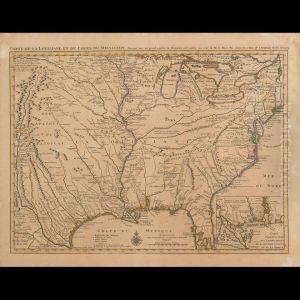Guillaume De L'Isle Paintings
Guillaume Delisle, also spelled Guillaume de l'Isle, was a French cartographer known for his popular and accurate maps of Europe and the newly explored Americas and Africa. Born on February 28, 1675, in Paris, France, Delisle was part of a family deeply involved in geography and the sciences; his father, Claude Delisle, was a geographer and historian.
From a young age, Delisle showed an extraordinary talent in the field of mapmaking. He was educated by his father and later studied under the astronomer Jean-Dominique Cassini. His rigorous training in mathematics and astronomy equipped him with the skills to refine the art of cartography, which at the time was burgeoning with new information due to explorations around the world. Delisle's work was particularly noted for its scientific approach to mapmaking, which was a departure from the more decorative and often less accurate maps of the time.
Delisle's first major work, a map of the world, was produced in 1700 when he was just 25 years old. It incorporated the latest information from French explorers and was widely praised for its accuracy and detail. He was appointed as the Royal Geographer by King Louis XIV in 1718, a testament to his reputation and the quality of his work. Delisle is often credited with being the first to correctly depict the Mississippi River and its delta on a map, which was a significant improvement over previous attempts.
His maps were so revered that they were copied widely, solidifying his reputation across Europe. Delisle's work set new standards for mapmaking and greatly contributed to the field of geography. He continued to produce maps that were not only practical for navigation but also works of art in their own right. Guillaume Delisle died on January 25, 1726, in Paris, but his legacy lived on through his maps, which remained in use for many years and influenced the future generations of cartographers.
